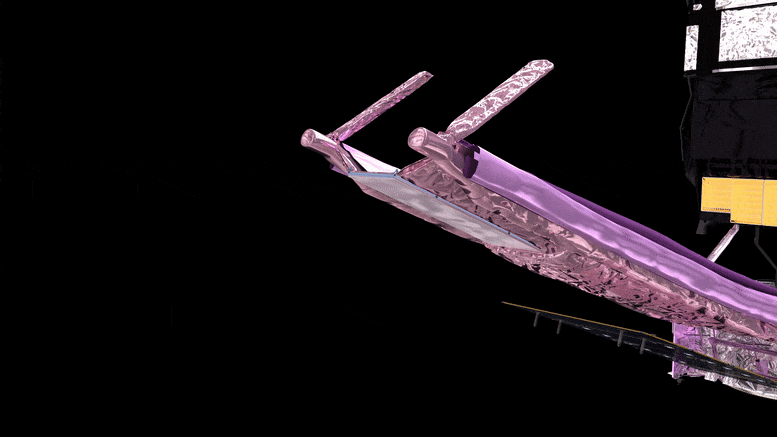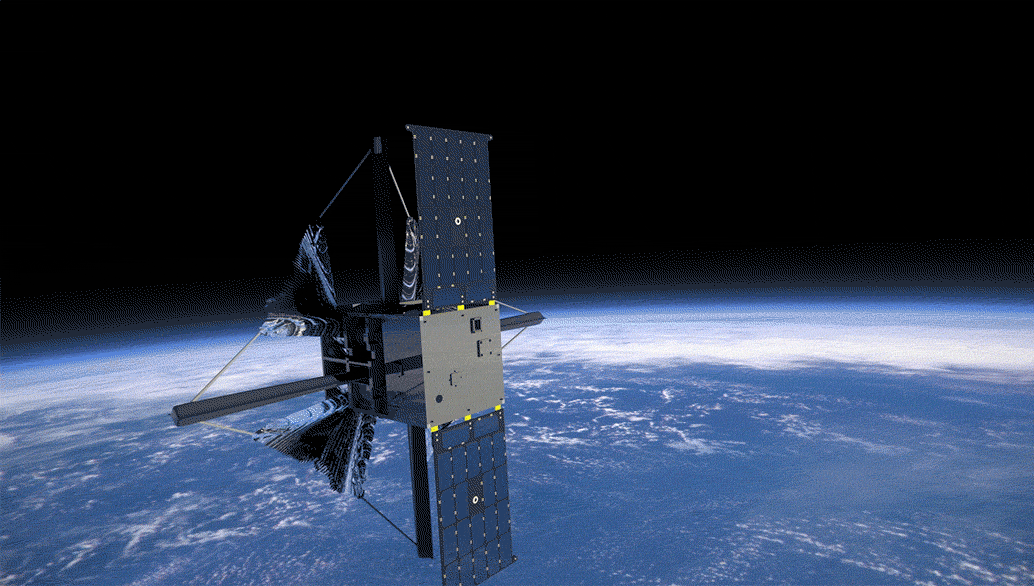The James Webb Space Telescope (JWST) was launched on Christmas Day 2021. Since then, the enthusiasm for the mission hasn’t gone down one bit. Now, as the mission gets closer and closer to full deployment, it’s time to look at a key aspect of the telescope: could it be pushed around by sunlight?

JWST is notorious for its size, especially the size of its sunshield. The telescope’s sunshield is over 20 meters (65.62 feet) across, and as the name implies, its main purpose is to shield the telescope from the Sun. A massive ball of fire in the middle of the Solar System is a complication for observations and the shield is crucial to protect the mirror to avoid light that could outshine the main purpose of the mission – infrared light.
The shield has 5 layers that look like tin foil, but it is actually an ultra-thin and resilient material (called Kapton), resistant to meteorite impacts as well as high temperatures. Even at temperatures of up to 400 Celsius, the shield won’t be damaged.
But the problem isn’t just the heat. Light can push things, so could the sunlight that reaches the telescope carry enough energy to push James Webb?
Radiation pressure
Electromagnetic waves carry energy, just like sea waves. When we feel the ocean waves move us up and down, that is the energy being transported that way. The other physical quantity that waves can transport is the momentum — the product of the mass and velocity.
The momentum of light is kind of weird. Photons, technically speaking, don’t have mass — but Albert Einstein’s special relativity states that massless particles can also carry momentum. If some light beam is energetic enough to carry momentum and apply pressure to a surface, the surface can be pushed — something called radiation pressure. When a surface is reflective enough, the radiation pressure is higher.
Other details change the radiation pressure. Depending on the angle the light reaches the object, the push can be more effective. That is intuitive, if the beam intersects the surface directly, a more effective push will be applied to the surface.
So think of it this way: enough photons that hit a large enough surface in the right way could cause it to move, like how wind can push a sail.
James Webb’s flap
Because of James Webb’s design and mission goals, the solar shield is inevitable, but it design also poses problems. A very large reflective surface pointed to the Sun could destabilize the telescope. The sunlight would hit the shield and make the observatory rotate. The solution is the “aft momentum flap”, something similar to a trim tab in order to counterbalance the rotation caused by the radiation pressure.

The flap at the end of the aft sunshield minimizes the torque produced by solar radiation pressure. It acts just like flaps used in aviation to stabilize airplanes with better aerodynamics, even if the solar radiation is trying to move the telescope. So the Sun couldn’t push the telescope a significant distance, but it could still ruin the alignment of the telescope, and basically ruin the entire mission.
Solar Sails
This begs the question: If radiation pressure is that powerful, why hasn’t anyone invented a spacecraft that uses the principle as ‘fuel’?
As it’s so often the case, the idea of solar sails was first discussed in science fiction. Arthur C. Clarke wrote a short story that brought the idea of solar sails. The story is about a race of solar sails happening in the solar system, it was published in 1964 entitled “Sunjammer”. Other stories were later inspired by Clarke’s fiction, such as “Treasure Planet”.
With Carl Sagan’s appearance on the Tonight Show Starring Johnny Carson in 1976 (when he introduced solar sailing to the general public), the whole idea seemed more realistic but less exciting. Now, astronomers are using the principle of solar sails already.
Until LightSail 2 was designed by the Planetary Society and launched in 2019. The mission goal was to test the advantages of solar sailing. LightSail 2 is in Earth’s orbit and corrects its position exclusively with solar light, without any other propulsion as other satellites do. It carries a CubeSat as it orbits Earth, the satellite has a camera that takes amazing pictures of our planet.

NASA plans to launch a solar sail of its own in 2022. The project is called Advanced Composite Solar Sail System (ACS3) and the sail will have 9 meters (30 feet) per side. ACS3 will also carry a CubeSat, but this time the spacecraft will have lighter booms made of carbon fiber polymers.
The real goal in solar sailing is to spend less money on fuel, not to mention the endless source of energy which is the Sun. Exploring the Solar System with solar sails would be very efficient, less expensive, and even maybe visit other stars.






